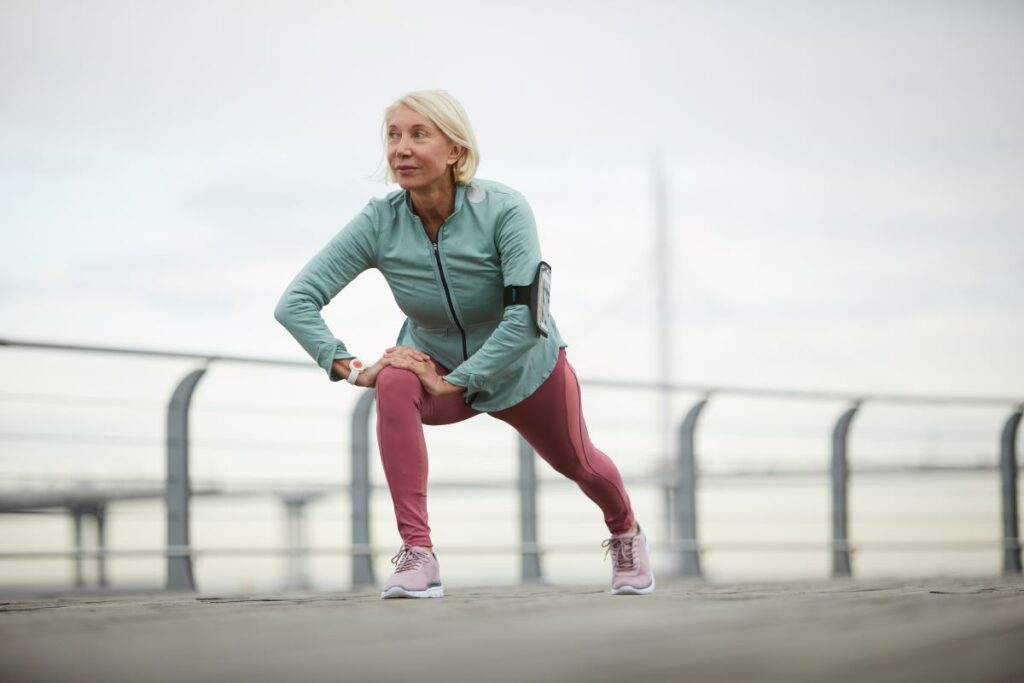Exercise Variety: Essential for Eating Disorder Recovery

By Rebecca Jaspan MPH, RD, CDN, CDCES
What is your relationship with exercise? Throughout your recovery journey, healing your relationship with movement goes hand in hand with healing your relationship with food and body. For many with a history of overexercising, you may have gotten stuck in the same exercise routines: possibly long runs outside, hours on the elliptical machine, or daily bootcamp classes a week.
A healthier relationship with movement means varying your workout routines and resting, too. There are so many ways to move your body and several important benefits to changing it up on a regular basis. Research shows that it is important to get four types of exercise: endurance, strength, balance, and flexibility1.
Endurance activities such as walking, biking, dancing, or playing a sport increase your breathing and heart rate. They promote heart health and can help to prevent conditions like diabetes and cancer. Endurance exercise has positive effects on skeletal muscle in regulating protein synthesis. There is evidence that despite the many additive benefits of endurance exercise for disease prevention and athletic performance, combining both endurance exercise with strength training promotes more muscle gain, strength, and power than doing either type of exercise alone2.
Strength exercises build muscle and help make every day activities easier. These types of exercises can include using weights or resistance bands and can be very effective with using just your own body weight. You want to vary the types of muscle groups you work as well, rather than focus on the same muscles throughout the week.
Balance is also important for overall health. You may not even realize how much good balance plays a role in almost every you do, from walking, getting up from a chair, to getting dressed each morning. Balance training involves exercises that strengthen your balancing muscles, including your legs and core. These exercises promote stability and prevent falls. You can practice your balance by standing on one foot, doing a heel to toe walk, and doing certain yoga poses.
And finally stretching can improve your flexibility, which is important for overall health. Flexibility is crucial to help you perform every day activities with more ease and it is also helpful for mobility and injury prevention. When you stretch on a regular basis, you can improve your range of motion, which gives you more freedom of movement. One study found both static stretching , holding a stretch for 30 seconds or longer, and dynamic stretching, doing several repetitions of stretching movements, are beneficial for increasing range of motion3. Additionally, dynamic stretching improves your performance in physical activity my preparing your body for subsequent motion, power, and strength4.
Here are three reasons why it is important to switch up your exercise routine to incorporate all four types of exercise.
-
Prevent overuse injuries
Tiny tears and damages occur in our muscles, tendons, and ligaments when we exercise and resting those body parts while using others allows them to recover and prevent overuse injuries. Different exercises compound on themselves, so getting better and stronger at one workout will help you improve at other workouts. If you are focusing on the same workouts over and over again and not noticing improvements, it could be because you aren’t getting enough variation in the types of workouts you are doing.
-
Prevent fatigue and muscle soreness
We need a combination of both easy and hard workouts. If you’re working out really hard all of the time, you may notice more fatigue and muscle soreness. Easier workouts and taking full days off completely allow the body to rest, repair, and prevent burnout.
-
Keep exercise fun
Changing up your workouts keeps exercise interesting, challenging, and less boring! Try a dance class once a week, replace a cardio day with yoga, or alternate between jogging and walking. Notice how your body feels with more variety in your exercise routine and by doing this, you are changing your relationship with exercise to one of self-care and honoring your body.
- https://www.nia.nih.gov/health/four-types-exercise-can-improve-your-health-and-physical-ability
- Fyfe JJ, Bishop DJ, Stepto NK. Interference between concurrent resistance and endurance exercise: molecular bases and the role of individual training variables. Sports Med. 2014;44(6):743-762. doi:10.1007/s40279-014-0162-1
- Page P. Current concepts in muscle stretching for exercise and rehabilitation. Int J Sports Phys Ther. 2012;7(1):109-119.
- Opplert J, Babault N. Acute Effects of Dynamic Stretching on Muscle Flexibility and Performance: An Analysis of the Current Literature. Sports Med. 2018;48(2):299-325. doi:10.1007/s40279-017-0797-9







